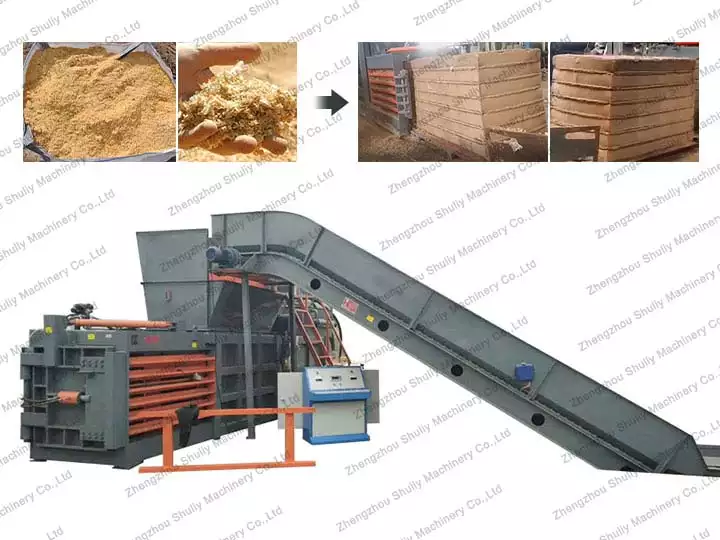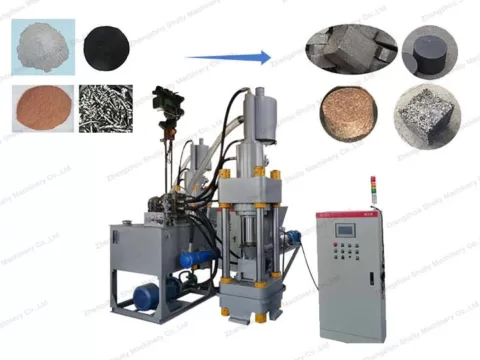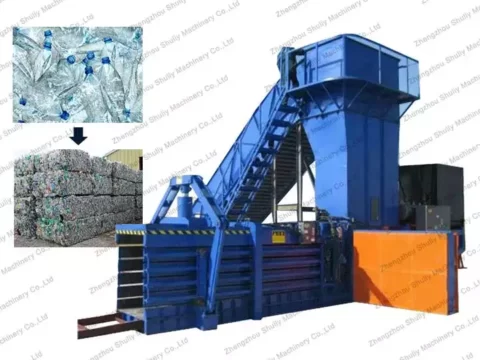Sawdust baler machine is designed compress and bale sawdust, wood chips, or wood shavings into compact bundles or bales. It is suitable for industries like woodworking, furniture manufacturing, and biomass power plant.
There are two common types of sawdust baler machines, vertical sawdust baler, and horizontal sawdust baler. They are suitable for different working situations production requirements. If you are looking for a reliable sawdust baling press machine, welcome to contact us for the best quote.
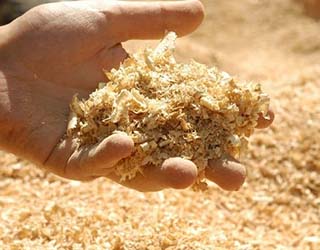
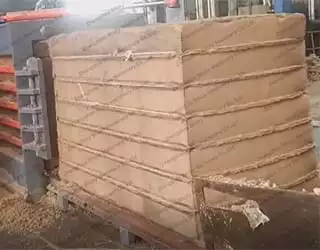
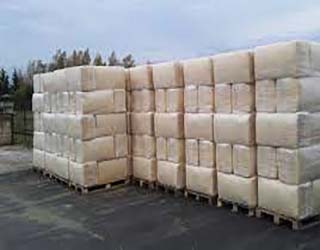
Two popular types of sawdust baler for sale
Vertical baler and horizontal baler are two most popular solutions for sawdust recycling. Each is designed for specific applications and baling requirements.
2. Horizontal baler: Horizontal baler is designed for larger-scale sawdust baling operations. They have a horizontal compression chamber and can handle higher volumes of sawdust. Horizontal balers are often used in industries that generate significant amounts of sawdust, such as sawmills and furniture manufacturing.


Vertical sawdust baler machine parameters
| Model | Pressure | Motor | Volume of the inner box | Final product size | Capacity | Weight |
| SL-15T | 15T | 5.5KW | 850*600*1300MM | 890*610*500MM | 1-1.5T/H | 1T |
| SL-30T | 30T | 7.5KW | 800*400*1300MM | 890*610*500MM | 1.5-2T/H | 1.5T |
| SL-60T | 60T | 7.5KW | 900*600*1300MM | 900*610*500MM | 2-2.5T/H | 2T |
| SL-80T | 80T | 7.5KW | 1200*800*1500MM | 1200*810*500MM | 3-3.5T/H | 3T |
| SL-100T | 100T | 15KW | 1100*900*1500MM | 1100*910*500MM | 3.5-4T/H | 3.5T |
| SL-120T | 120T | 18.5KW | 1200*100*1500MM | 1200*100*500MM | 4-5T/H | 4T |
Horizontal sawdust baler machine parameters
| Model | SL-120/100 | SL-180/160 | SL-200 | SL-220 |
| Pressure | 28Mpa | 28Mpa | 31.5Mpa | 31.5Mpa |
| Feeding port size | 1700*1020mm | 2000*1100mm | 1100*200mm | 1100*2000mm |
| Final product size | 1100*900mm | 1100*1300mm | 1100*1300*1500mm(ajustable) | 1500*1100*1400mm |
| Final product weight | 1100-1550kg | 1100-1550kg | 1100-1550kg | 1100-1550kg |
| Total motor | 22kw | 43.5kw | 55kw | 62kw |
| Packing way | Manual tempered wire 2.8-3.2mm 3 lines | Automatic tempered wire 2.8-3.2mm 4 lines | Automatic12# wire 5lines | Automatic 12# wire 5 lines |
| Control system | PLC System | PLC System | PLC System | PLC System |
| Capacity | 7T/H | 10T/H | 12T/H | 14T/H |
| Oil type | 46# Hydraulic oil | 46# Hydraulic oil | 46# Hydraulic oil | 46# Hydraulic oil |
| Oil tank | 2000kg | 2000kg | 2000kg | 2000kg |
Benefits of Shuliy sawdust baler machine
1. Efficient Storage: Baling sawdust allows businesses to store larger quantities of sawdust in a smaller area, optimizing storage space.
2. Cost-Effective Transportation: Baled sawdust is easier to handle, stack, and transport, reducing transportation costs and improving logistics.
3. Waste Volume Reduction: Baling sawdust reduces the volume of waste, minimizing the space needed for storage and disposal.
4. Environmental Sustainability: By diverting sawdust from landfills, baling contributes to effective waste management and reduces environmental impact.
5. Revenue Generation: Baled sawdust can be sold as a valuable resource, potentially generating additional income for businesses.
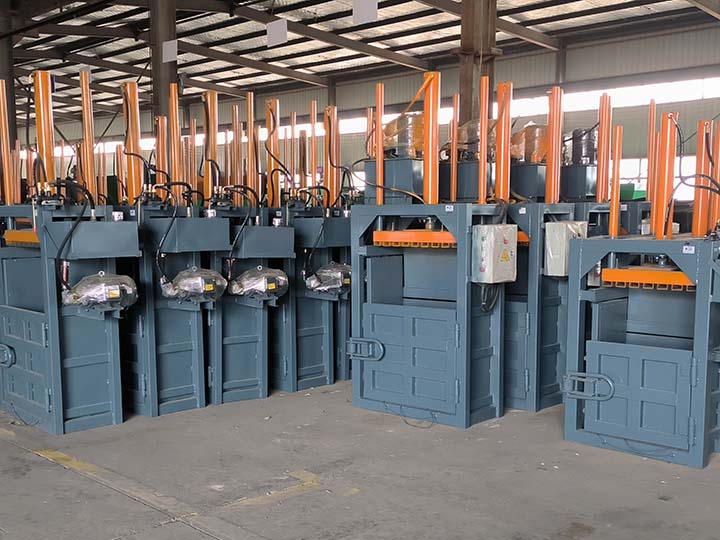

Factors affecting sawdust baler performance
Several factors influence the performance of sawdust balers. The characteristics of the sawdust, such as moisture content, particle size, and density, play a crucial role. Different balers are designed for specific sawdust types, so choosing the right equipment is essential for optimal performance. Proper maintenance, safety precautions, and training are also vital for smooth operation. Furthermore, advancements in automation and technology have improved the efficiency and productivity of sawdust balers.
Why recycle sawdust?
1. Environmental Sustainability: Recycling sawdust helps minimize the impact on the environment. When sawdust is recycled, it avoids ending up in landfills where it can release harmful greenhouse gases, such as methane, during decomposition.
2. Resource Conservation: Sawdust is derived from trees, which are valuable natural resources. By recycling sawdust, we can conserve these resources by giving them a second life. Instead of being treated as waste, sawdust can be transformed into useful products or materials, reducing the need for the extraction of fresh resources.
3. Waste Reduction: Recycling sawdust helps reduce the volume of waste generated by industries such as woodworking, furniture manufacturing, and construction. By diverting sawdust from landfills, we can minimize the strain on waste management systems and improve overall waste management practices.
4. Energy Recovery: Baled sawdust can be utilized as a valuable energy source. It can be used as fuel in biomass power plants, where it is burned to generate heat or electricity. By recycling sawdust for energy recovery, we can reduce reliance on fossil fuels, promote renewable energy sources, and contribute to a more sustainable energy landscape.
5. Economic Opportunities: Recycling sawdust can create economic opportunities for businesses and industries. Baled sawdust can be sold as a raw material or resource to other industries, such as those involved in manufacturing particleboard, wood pellets, or animal bedding. This not only generates revenue but also supports job creation and economic growth.
Best practices for optimizing sawdust baler efficiency
To maximize the efficiency of sawdust balers, businesses can implement certain best practices. Preparing the sawdust before baling by screening, drying, and sorting helps achieve better baling results. Proper feeding techniques ensure consistent bale density and prevent issues such as blockages. Maximizing throughput without compromising safety requires careful planning and adherence to recommended operational guidelines. Regular maintenance, including cleaning, lubrication, and inspection, is crucial to keep the baler running smoothly and prevent breakdowns.

